Dogs
Dogs
Proper Control
Dos and Don'ts
Dos and Don’ts for Handling Dogs in Public Places
Whether you are a dog owner or not, whenever you walk a dog, you should pay attention to the following

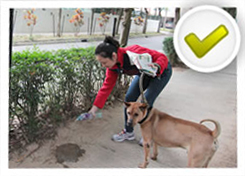
- Be a responsible dog walker, clean up after your dog to keep the environment clean. DO bring your dog to the nearby dog latrine. If there is no dog latrine around, do take enough newspaper or plastic bags with you when you walk your dog. Wrap up the faeces with newspapers or plastic bags and place it into the Dog Excreta Collection Bin or rubbish bin. In addition, DO bring sufficient clean water to rinse the spot where the dog has urinated. Any person allowing the fouling of public places by his / her dog’s faeces is liable to a fixed penalty of $3,000 (for details, please visit Food and Environmental Hygiene Department’s website www.fehd.gov.hk).
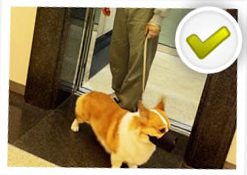
- DO keep your dog under proper control. According to the law, all dogs must be kept on a leash or under proper control in public places. Additionally, dogs weighing 20kg or above must be held securely on a leash of not more than 2m in length in public places (except Country Parks). Penalties apply for persons contravening these regulations.
- DO be considerate at all times.
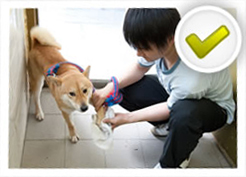
- DO clean your dog’s feet and toes after walking it.

- DON'T allow your dog to be out of your sight or cause nuisance to other
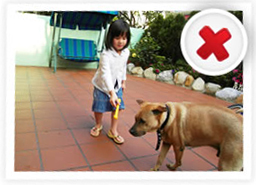
- DON'T allow your dog to be in contact with animals suspected to be sick.
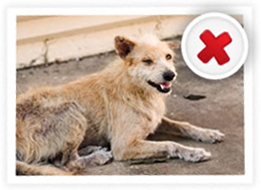
If your dog weighs 20 kg or more, please refer to Large Dogs for more information about the control of large dogs.
Preventing Dog Bites
Owning a dog can be a rewarding family experience. Children learn to interact with the dog and learn to take responsibility for the health and well-being of the dog. However, while the ownership of a dog may have enormous benefits for children, parents need to be aware of the risk of injury to their children through dog bites.
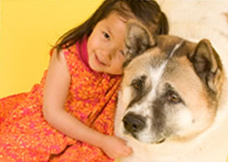
Children are most frequently bitten by their own family dog or by a friend’s dog. Children most at risk of dog bite injuries are usually under 5 years old, and the dog bite incidents usually happen in or around their own homes. Whilst children are particularly at risk, people of any age can get bitten whether it is at home or in a public place.
Young children are often bitten on the face, head and neck because of their height in relation to the dog. Dog bites can lead to permanent scarring and disfigurement and the wounds may become infected. Dogs with a history of aggression are not suitable for a household with children.
To avoid being bitten, you should abide by the following rules:
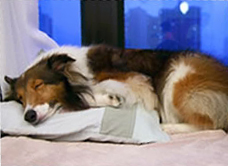
- Do not approach a sleeping dog.
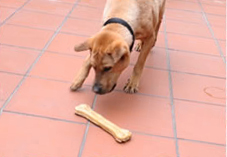
- Do not approach a dog that is eating or gnawing on a bone.
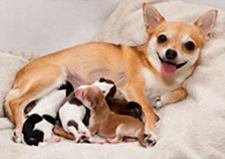
- Do not approach a bitch that is caring for her puppies.
- Do not make sudden movements, run or scream near a dog.
- Do not stare at a dog.
- Do not come between dogs that are fighting.
- Adults should supervise their children around dogs and vice versa.
- A child less than 7 years of age should never be left alone with a dog even for a short time, even if it is their own dog and even if it has not shown aggression before. Children may not know how to interact with dogs properly and even the best-behaved dog may react when provoked by a child unintentionally. It would be too late to take action if your child was already scarred for life.
- Adults are also responsible for introducing dogs to children and making sure the interaction between them is always a positive one.
- Ask the owner if it is okay to approach the dog and do not let children approach a dog without the permission of the owner.
- Remain calm and quiet; do not make loud noises or sudden movements.
- Do not actively approach a strange dog; instead, let the dog come to you to get to know you.
- The dog should be approached on an angle or from the front but never from the rear – the dog should be able to see the approach so it is not surprised.
- Once you get closer to the dog, slowly extend the back of your hand and allow the dog to sniff your hand before stroking it under its chin or stroking the side of its chest.
- Dogs should not be patted on the top of their head or their shoulders unless you are familiar with them.
- An open palm facing the dog may be seen as a threat by the dog and may cause the dog to act defensively. If the dog doesn’t sniff or if it backs away, do not attempt to pat it.
- You should teach young children the proper skills to interact with dogs safely through your own correct behaviour which acts as a model.
- When approached by an unfamiliar dog, children should be taught to stand still with their arms by their sides. In all probability, the dog will sniff the child, then walk away.
- Do not make eye contact with the dog.
- Do not run or scream near a dog, otherwise you may be chased and the risk of injury increases.
- Children should be taught to leave stray dogs alone and to report them to an adult who can then report them to our department for further action.
Dogs have a special way of communicating with each other and humans. A dog’s body language gives us clues on how it might be feeling.
Do not approach a dog if it:
- lifts its lips;
- growls;
- backs off;
- raises the hair on its back;
- jumps up at people;
- barks with ears lying flat.
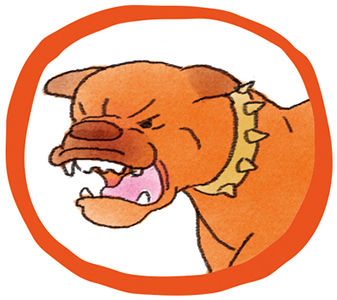
- socialise your dog when it is young;
- neuter your dog to reduce certain types of aggression;
- keep your dog under control at all times;
- keep your dog on a leash;
- muzzle your dog in public places whenever necessary;
- consider taking your dog for training classes.
Dogs do not communicate in the same way as humans. Training is the key to preventing dog bites and has many other benefits. Dogs, children and adults all need to be trained on how to approach each other safely and how to communicate with each other effectively.
Training is essential for all dogs regardless of their age, breed and size. Training helps dogs learn good “manners”. Proper training helps dogs learn how to behave appropriately around humans including strangers and children.
All dogs should be taught basic commands that will keep them and others safe. For advice on training, contact the SPCA and/or private trainers. There are also many excellent books on the subject which you can read to get advice.
More advice about dog training can be found here.
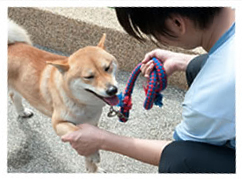
- Immediately restrain your dog.
- Help the victim to clean the wound at once. You should advise the victim to seek medical treatment right away.
- The incident shall be reported to the police and our department and you should cooperate fully with the officers investigating the incident by providing your own personal information and details of the incident.
- The dog will either be brought to one of our department’s Animal Management Centres for a 7-day observation period or it may be allowed to have home observation for the same period of time provided that its rabies vaccination status is valid (other conditions apply).
- Consult your veterinarian about your dog’s behaviour and consider taking it for training classes.
- Clean the wound immediately and thoroughly for 10-15 minutes with plain water and soap. If available, also use Povidone Iodine disinfectant.
- Seek medical treatment right away. If necessary, immunisation against rabies may be given.
- Even if you have had pre-exposure immunisation against rabies before, it does not eliminate the need for post-exposure immunisation if there is a risk of rabies.
- Since there is a high risk of the wound getting infected, antibiotics may be needed.
- Try to make sure that the biter dog does not bite anyone else. But at the same time do not take any more risks.
- Have the dog owner restrain the biter dog (e.g. holding the dog on a leash and muzzle it) or if the biter dog does not have an owner or its owner is not around, attempt to cage or confine the biter dog until the authorities arrive. Again, only do so if this is possible without further risk to yourself.
- Inform the authorities and try to remain calm. The incident should be reported to the police and our department and you should cooperate fully with the officers investigating the incident by providing your own personal information and details of the incident.
- Find out if the biter dog has had rabies vaccination.
- The biter dog will either be brought to one of our department’s Animal Management Centres for a 7-day observation period or it may be allowed to have home observation for the same period of time provided that its rabies vaccination status is valid (other conditions apply).
If a dog is not on a leash or otherwise under control in a public place and bites a person, the keeper of the dog may be guilty of an offence and liable to a fine of $10,000.
Training


Proper training of your dog is vital to ensure that you can control it properly and that it responds to your commands. It sets boundaries for the dog and lets it know what is expected of it.
Other benefits of training your dog:
- It helps you to understand your dog more and vice versa;
- It helps you to build a closer relationship with your dog;
- It prevents your dog from becoming a nuisance;
- It gives your dog something to do and helps build its confidence;
- It helps your dog to become a better companion.
Start training your dog when it is young and use rewards to encourage proper behaviour. Rewards can be in the form of food treats, petting, verbal praises, games, etc. Make sure you train your dog to walk on a leash and obey some basic commands. In this way, you can keep it under proper control at all times especially in public places. You can either train your dog by yourself or take it to professional dog obedience training classes.
Some basic dog training rules:
- Be consistent in your commands at all times. Keep them short and simple. Some basic commands include ‘Sit’, ‘Stay’, ‘Come’, ‘Down’ and ‘Heel’.
- Training should be a positive experience for you and your dog, and should be conducted in short sessions away from other distractions so that your dog does not get bored or lose concentration.
- Stay calm. If you get angry during the training session and treat your dog harshly, it will lose trust in you.
- Be patient. Remember it takes time for your dog to learn a command or trick. Don’t push your dog through training too fast.
- The principle of training your dog is to praise and reward them when they do the right thing. This is called positive reinforcement. Use rewards such as food treats, petting, verbal praises or games to reinforce correct behaviour. If your dog has successfully performed a trick or followed a command, give it a reward.
We organise dog training courses from time to time. For details, please click here.
According to Section 23 of the Rabies Ordinance, Cap 421, a dog keeper must keep his / her dog on a leash or under proper control in public places. Any person who contravenes the above commits an offence and is liable to a fine of $10,000.
Remember, it is a legal obligation to keep your dog under proper control at all times when in public areas.